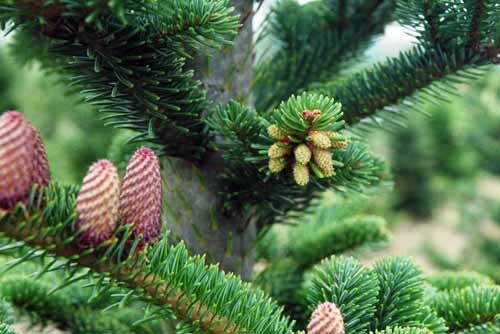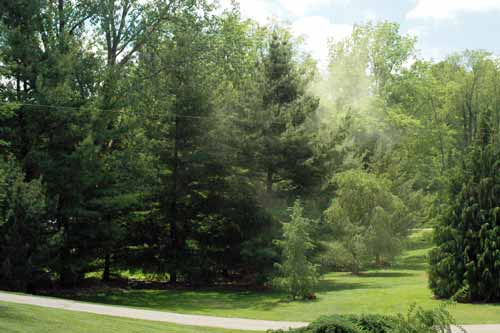Pollen cones may be plentiful on conifers in 2013
Stress from 2012 drought likely to result in bumper crop of pollen cones.
After last year’s (2012) drought and very warm temperatures, Michigan State University Extension expected to see more cone production in conifers. This is a major concern for Christmas tree growers (see related article, “2013 Likely to be a big year for cones in Fraser fir plantations”). However, we are also seeing heavy pollen cone production in conifers in the landscape this spring. The problem has been most acute in spruces, especially Norway and Colorado blue spruce, but we are also finding it in Douglas fir, several true fir species and pine.

Pollen cones (right side) in conifers are small and often go unnoticed.
Homeowners may find their cars and deck coated with a yellow dusting of pollen. Pollen cones on conifers are relatively small and often go unnoticed. They are usually clustered near the ends of branches and may be yellow, green or purple, but as they dry out they turn brown. In some trees, pollen cone production is so prolific that the tree takes on a brownish cast. Some homeowners have mistaken the dried pollen cones for signs of insects or diseases.

The “dust cloud” in this photo is actually a cloud of pollen from several large, white pine trees.
The heavy pollen cone production, although unsightly, does not pose any long-term problems for the trees. The main issues tend to be the mess associated with the pollen itself and increases in allergies. Spruces, firs and Douglas firs have a two-year cone production cycle. As an evolutional adaptation to reduce self-pollination, female cones are usually produced in the upper one-third of the tree crown, whereas pollen cones are mostly found in the middle one-third. Reproductive buds are formed in the summer of the first year and then flush in the second year. So, the outbreak of pollen cones we’re seeing this year is related to environmental signals the trees received last summer.



 Print
Print Email
Email



